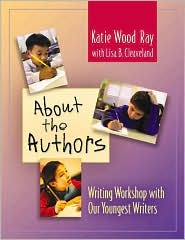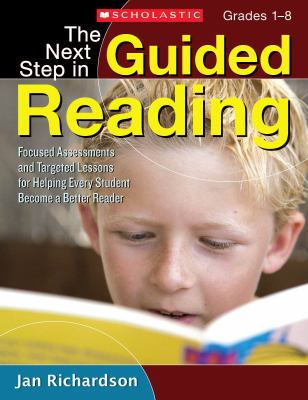 As promised to the K-2 teachers at Robert Treat Academy in Newark--here are a few recommendations of professional books related to K-2 literacy, with an emphasis on teaching writing.
As promised to the K-2 teachers at Robert Treat Academy in Newark--here are a few recommendations of professional books related to K-2 literacy, with an emphasis on teaching writing.Cleveland, Lisa and Katie Wood Ray. (2003). About the Authors: Writing Workshop with Our Youngest Writers. Portsmouth, NH: Heinemann.
An inside look at the ways that first grade teacher, Lisa Cleveland teaches her students to write well and assisted by consultant Katie Wood Ray. Includes an overview of units of study that Lisa taught and samples of student work. I also think the DVD, The Teaching Behind the Authors, is excellent, especially as it chronicles teaching writing the very first day in first grade.
 Cowhey, Mary. (2006). Black Ants and Buddhists: Thinking Critically and Teaching Differently in the Primary Grades. Portland, ME: Stenhouse.
Cowhey, Mary. (2006). Black Ants and Buddhists: Thinking Critically and Teaching Differently in the Primary Grades. Portland, ME: Stenhouse.This is one of my favorite teaching books as the author, Mary Cowhey is a fine storyteller and the stories she tells about the teaching she did with her first and second graders at a public school in Massachusetts are critical ones that illustrate social justice and literacies in action. Highly recommend this book.
 Dorn, Laura J. & Tammy Jones. (2012). Apprenticeship in Literacy: Transitions Across Reading and Writing K-4. (2nd Edition) Portland, ME: Stenhouse.
Dorn, Laura J. & Tammy Jones. (2012). Apprenticeship in Literacy: Transitions Across Reading and Writing K-4. (2nd Edition) Portland, ME: Stenhouse.I purchased this book as soon as it was available having read and reread the first edition. I believe deeply in cognitive apprenticeship and Dorn and Jones based their book on this theory. This text is thorough and contains significant classroom based examples that illustrate what it means to apprentice a child. The keen insights into the use of teacher language makes this a critical text to read/reread. You might also find the intervention model Dorn and Schubert developed of great interest. Here is a link to A Comprehensive Intervention Model for Preventing Reading Failure: A Response to Intervention Process by Linda Dorn and Barbara Schubert (from Journal of Reading Recovery, 2008)

Heard, Georgia & Jennifer McDonough. (2009). A Place for Wonder: Reading and WritingNonfiction in the Primary Grades. Portland, ME: Stenhouse.
 I just recently read this title and was found it to be filled with specific practices that a kindergarten-first grade teacher, Jennifer McDonough along with parent and poet Georgia Heard employed while helping young children to read and write nonfiction. The writing is lovely and the ideas are sound. I read it in a gulp.
I just recently read this title and was found it to be filled with specific practices that a kindergarten-first grade teacher, Jennifer McDonough along with parent and poet Georgia Heard employed while helping young children to read and write nonfiction. The writing is lovely and the ideas are sound. I read it in a gulp.Miller, Debbie. (2002). Reading with Meaning. Portland, ME: Stenhouse.
If you are questioning how to teach comprehension, or struggling to do so, I would recommend Debbie's book. Clearly written, this text outlines the work she did with primary grade students and includes samples of student work. The quality is very high. This book inspires me to teach better.
 Richardson, Jan. (2009). The Next Steps in Guided Reading: Focused Assessments and Targeted Lesson for Helping Every Student Become a Better Reader. New York: Scholastic.
Richardson, Jan. (2009). The Next Steps in Guided Reading: Focused Assessments and Targeted Lesson for Helping Every Student Become a Better Reader. New York: Scholastic.I love this book by Jan. Many years ago when I was the Literacy Director for Newark Public Schools, I hired Jan to do some work modeling instruction with K-2 children. Her work resonated with all of us. This book outlines much of what Jan modeled. What I appreciate about this text is that it is evident that the ideas and practices are based on the on work Jan has done in the area of preventing reading difficulties, especially with the "hard to teach" child. I highly recommend it for teachers who want specific ideas and practices for preventing reading difficulties. Jan's practices far surpass the more traditional guided reading lessons. The content mix of guided reading, phonics, and writing provides a nexus of support for learners.
Karen and Mary Ann highlight several different reading and writing units of study (dialogue, setting, nonfiction, and content area research) conducted with second grade children across a school year. This book has been a favorite of countless graduate students I've taught. Why? They often commented that the book provided an array of materials that are specific to each unit and helped them to envision how they might craft their own units and/or make use of these units when teaching.
 Vasquez, Vivian M. and Carol Branigan Felderman. (2012). Technology and Critical Literacy in Early Childhood. New York: Routledge.
Vasquez, Vivian M. and Carol Branigan Felderman. (2012). Technology and Critical Literacy in Early Childhood. New York: Routledge.In this work, Vivian and Carol explore the intersections between new technologies and critical literacies through case studies of early childhood classrooms (PK - 2). Technologies that are highlighted include VoiceThread, podcasting, world mapper, clustr maps, wordle, tagxedo, bit strips for schools (comics), literacy through photography [blog], odosketch, storybird, kerpoof, photopeach .
Thanks for reminding me of some favorite titles, and introducing me to some new ones. As always, you are out ahead!
ReplyDeleteMy pleasure.
Delete